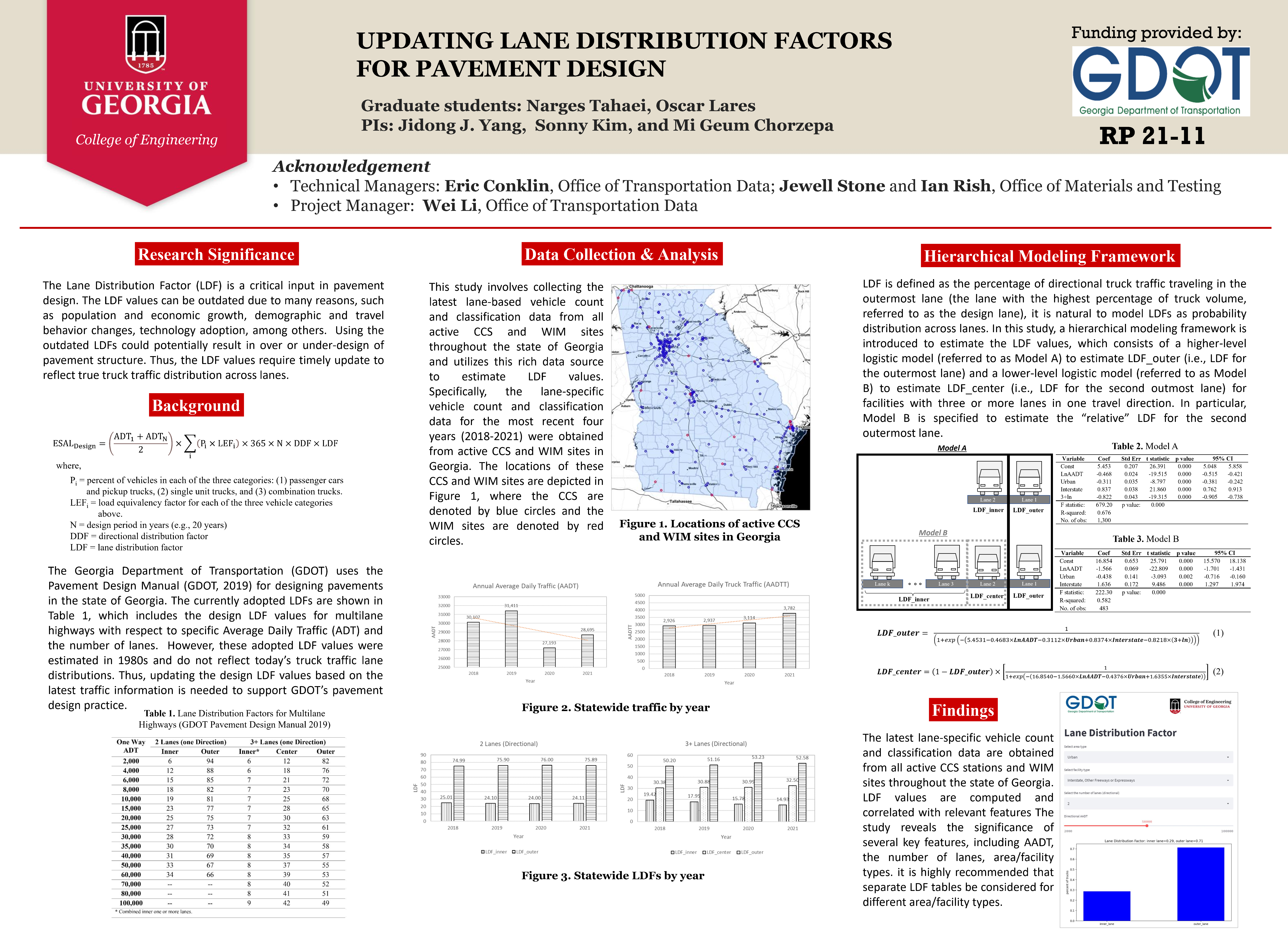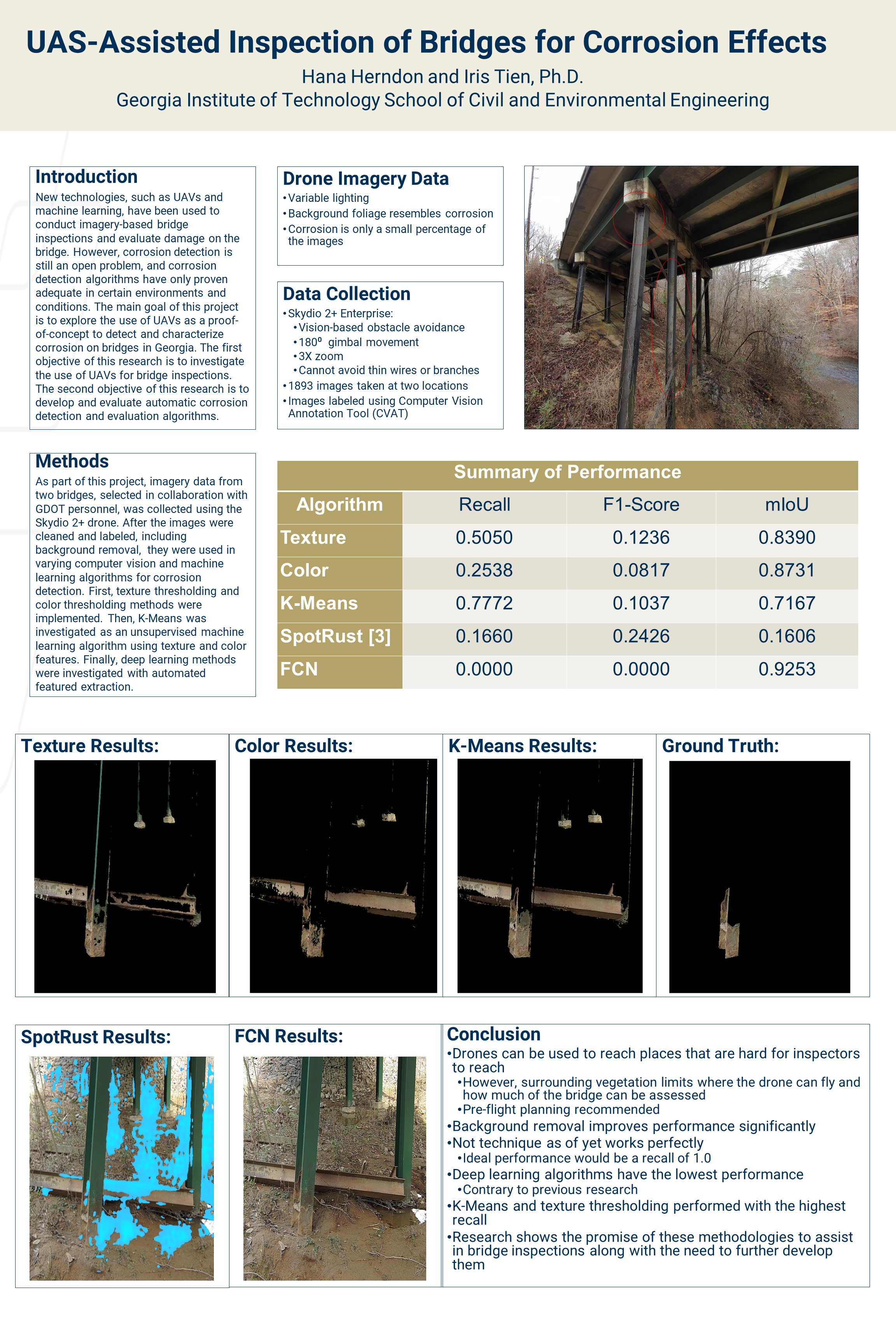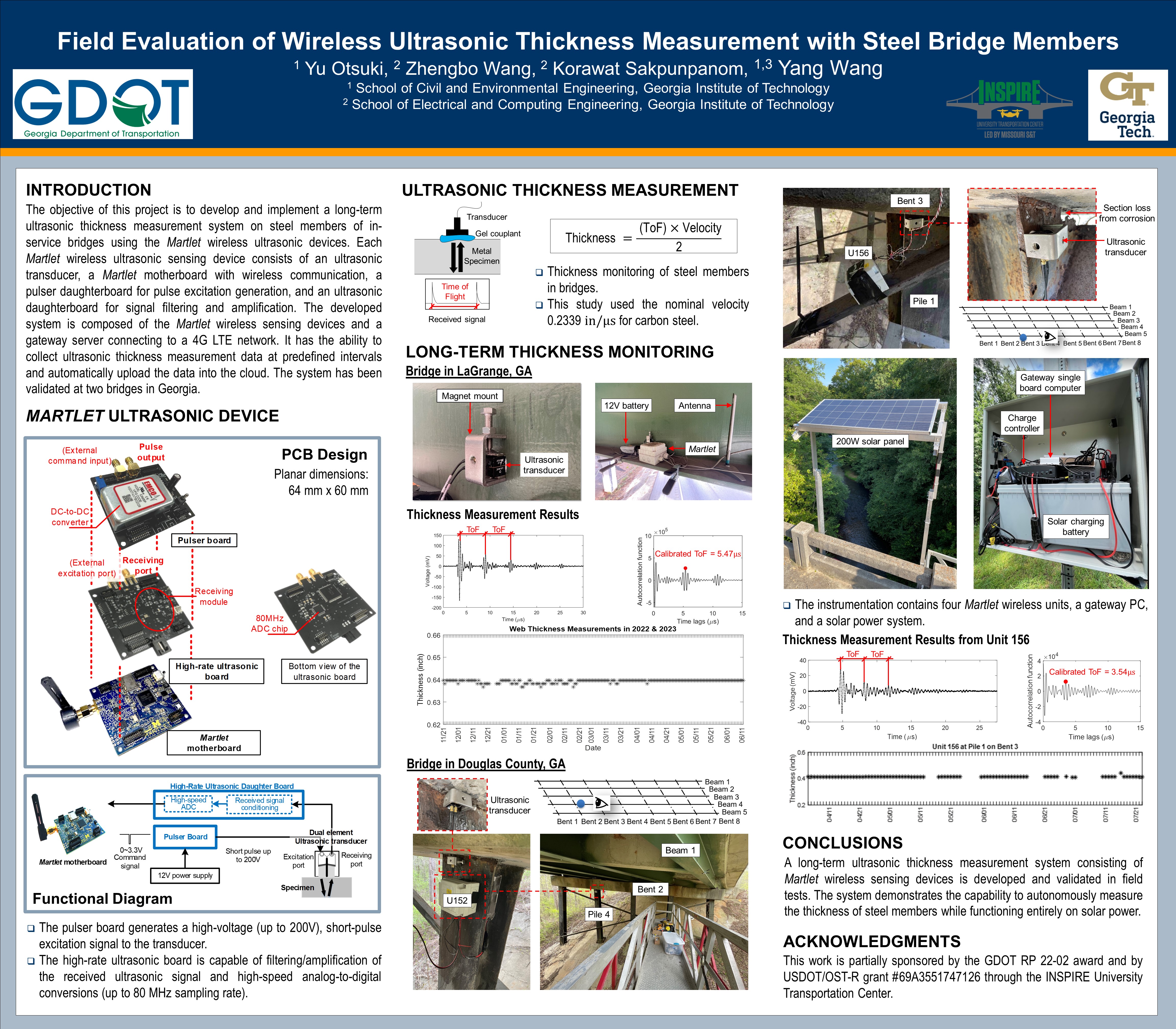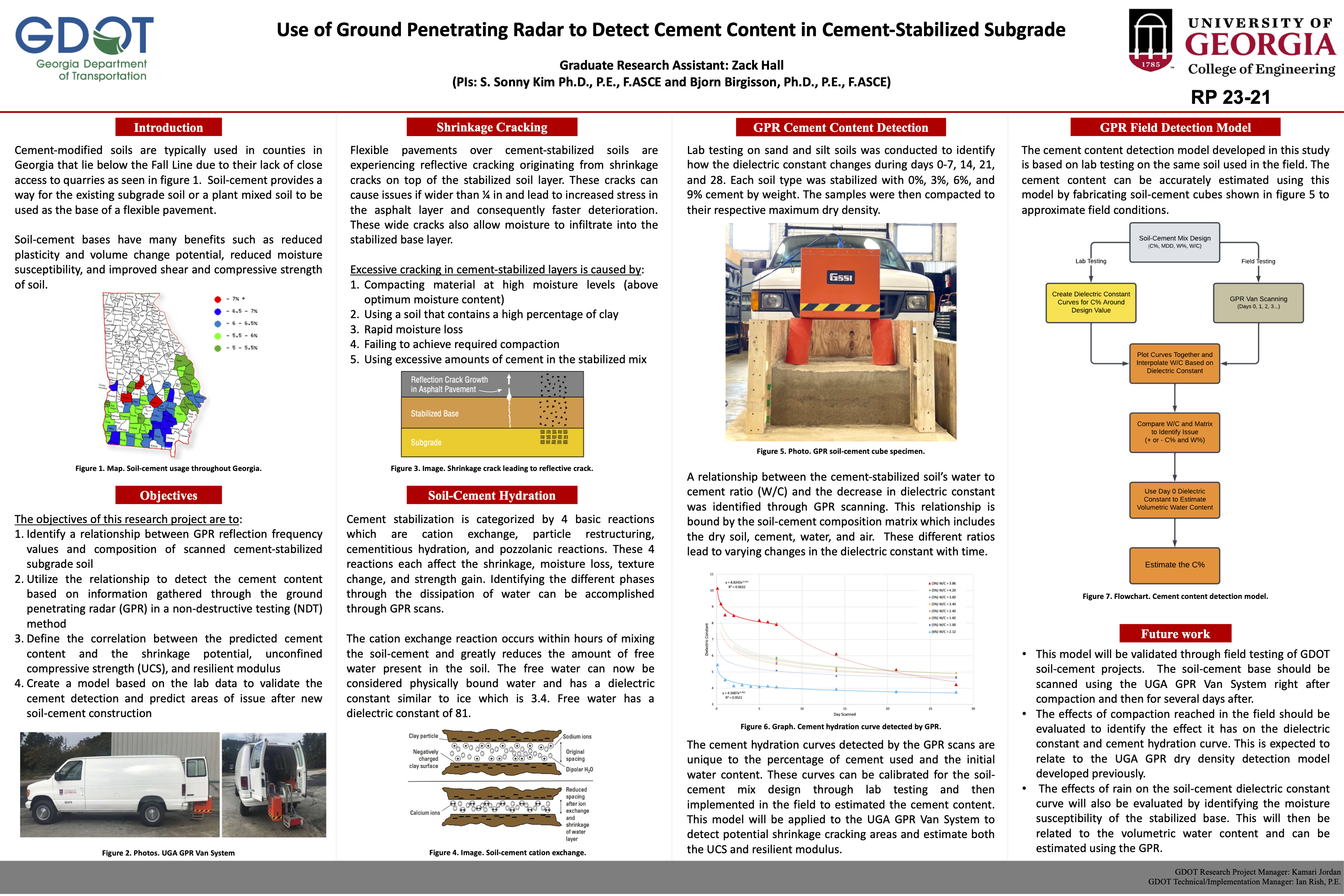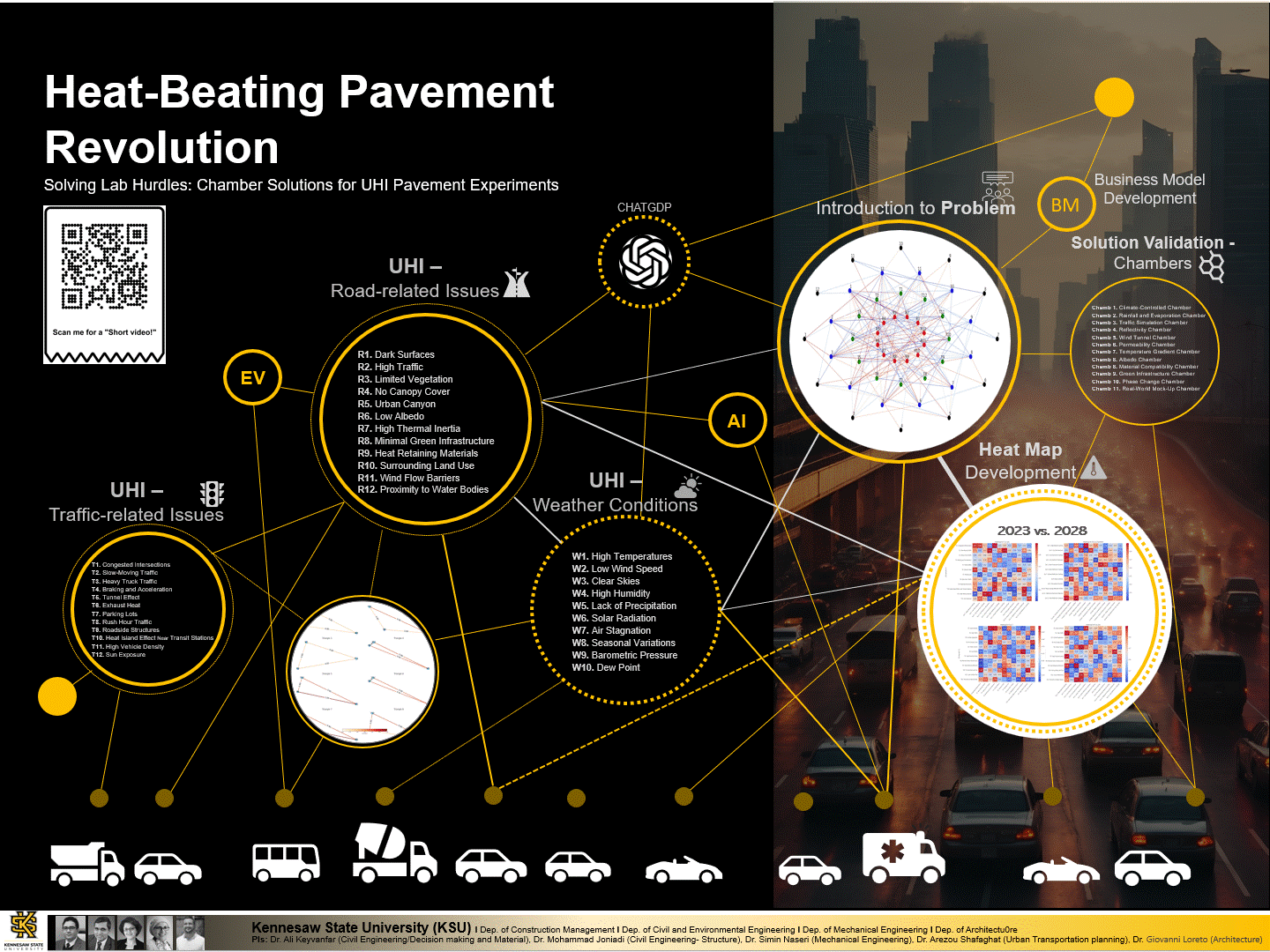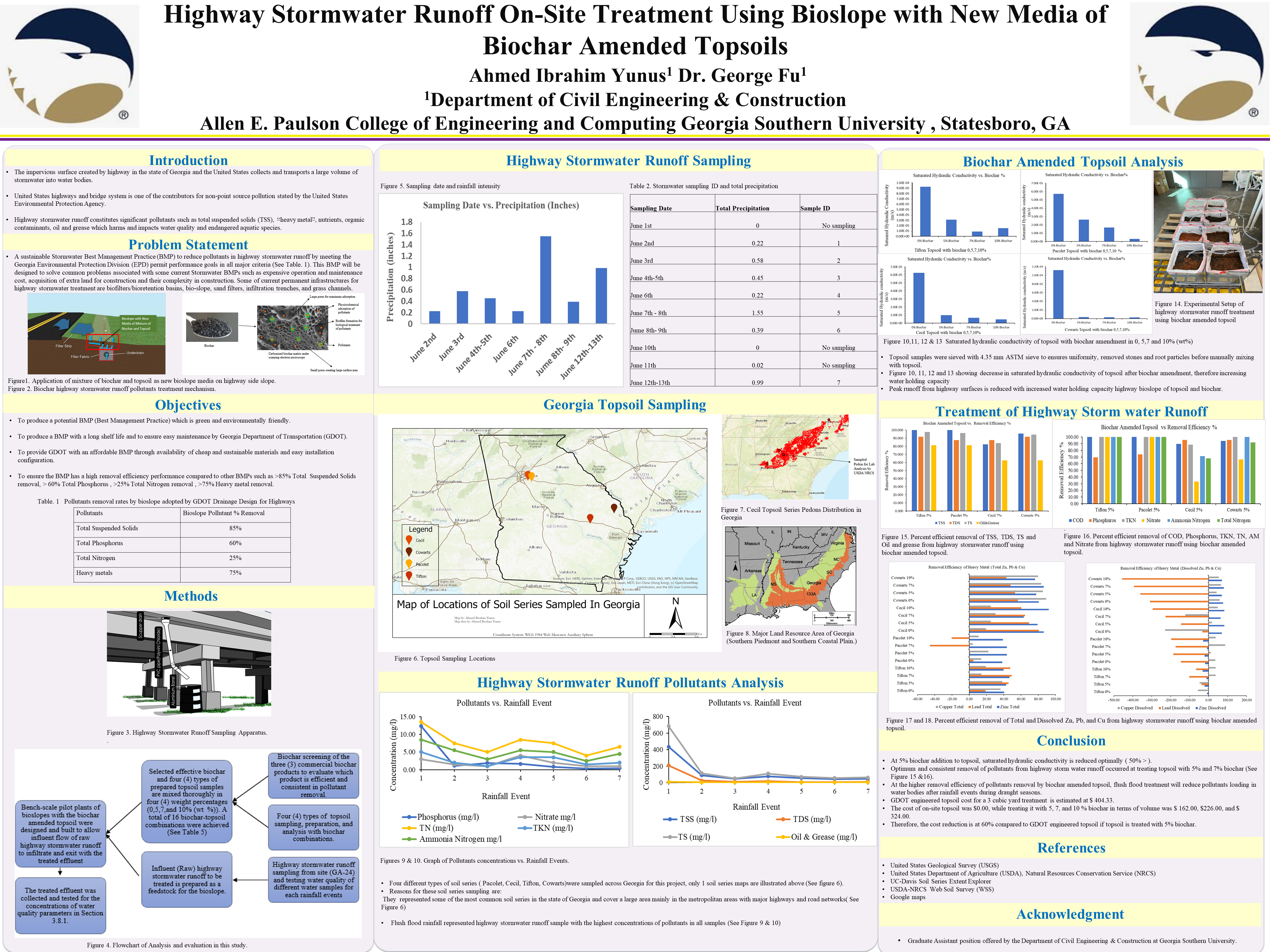ENHANCING THE GDOT’S MAINTENANCE DECISION TREES CONSIDERING THE EFFECTIVENESS OF VARIOUS TREATMENT OPTIONS IN DIFFERENT GEOGRAPHICAL LOCATIONS AND OVER TIME
PI: Brian Moore
Co-PI(s): Baabak Ashuri
Institution(s): Kennesaw State University & Georgia Institute of Technology
Abstract
This research aims to help the Georgia Department of Transportation (GDOT) Office of Maintenance better allocate funding and improve maintenance strategies at the network level through updating the decision tree considering temporal and spatial variation in cost, deterioration rate, and maintenance effectiveness. The GDOT has adopted a comprehensive pavement management measure, Overall Condition Index (OCI). The OCI serves as a basis to trigger maintenance and rehabilitation. It is derived by averaging six distress indices, load cracking, edge cracking, block cracking, reflective cracking, rutting, raveling, and an additional adjustment index score for asphalt pavements. This new measure takes advantage of the automated data collection method, however, the corresponding maintenance and rehabilitation criteria for pavements need to be studied and updated considering regional effects, cost variation, the effectiveness of different treatment options, and decision timing. The major objective of this research is to enhance the GDOT’s maintenance decision trees through: (a) empirically analyzing the effectiveness of various treatment options in different geographical locations and climate conditions across the state; (b) improving lifecycle cost estimates for the treatment options; and (c) conducting tradeoff analysis among various maintenance strategies (e.g., 20% pavement improvement vs. wait and replace the entire pavement), in order to determine the optimal strategy that can be implemented over time. The updated framework for maintenance and rehabilitation projects can help the GDOT better plan investments to improve the conditions of its strategic assets, and thus, allocate its limited resources more efficiently and effectively to various project types in different districts. Substantial amounts of cost-saving are anticipated as the result of updating the decision tree and utilizing optimal strategies for intervention.
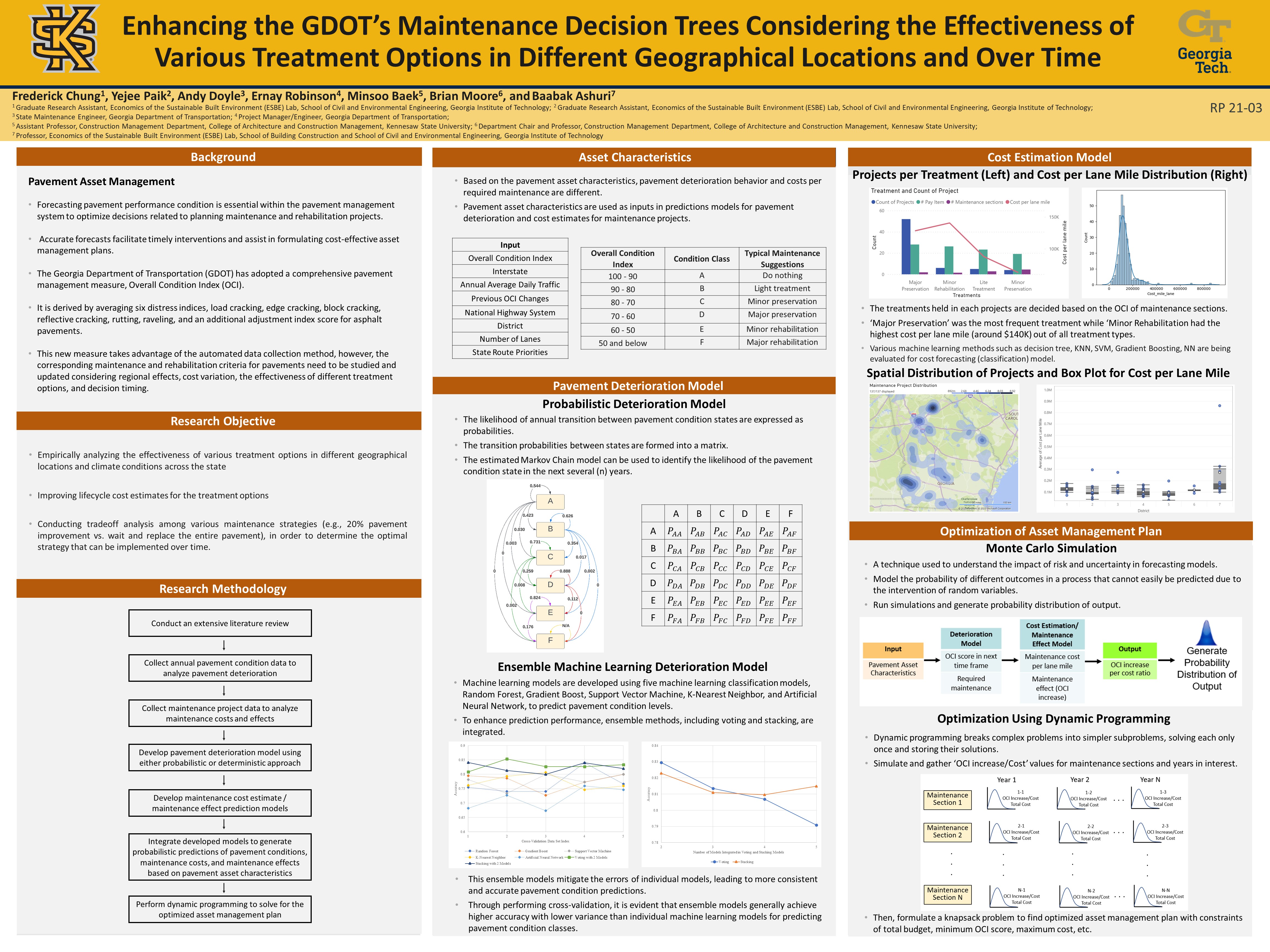
Please comment below with any statements or questions you may have. Also let GTI if you would be interested webinars or presentations on similar topics.



